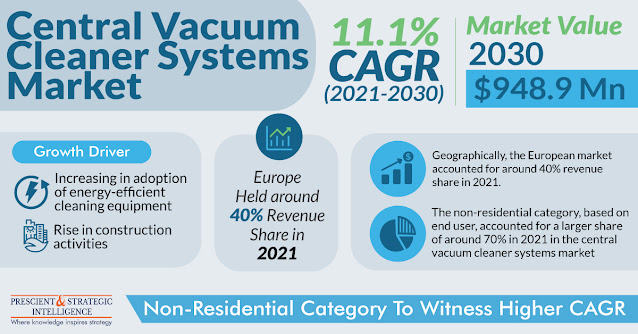In 2021, the multi-layer ceramic capacitor market contributes $12.2 billion in revenue, and it is projected to rise to $34.6 billion in 2030, progressing at 12.3% from 2021 to 2030. Moreover, the automotive category holds the significant multi-layer ceramic capacitor market share, accounting for revenue worth $4.8 billion, and it is expected to rise at a rate of 12.4% in the coming years. The rising adoption of EVs and self-driving vehicles in the automotive industry, with increasing government support for mandatory ADAS systems, and smart technologies for automotive manufacturing implementation drives the market.
 |
| Multi-Layer Ceramic Capacitor Market Outlook Growth Forecast to 2030 |
Moreover, MEMS introduction linked with ADAS, technical improvements in infotainment, connected cars developments, and integration of IoT devices in automobiles, results in the surging requirement of the electronic control units, which results in the growing demand for the high-capacitance MLCCs, that bolsters the expansion of the multi-layer ceramic capacitor market. The continuous technological advancements in the automotive sector require improvements in the safety feature, component downsizing, and high capacitance. In addition, the surge in the usage of electronic components in vehicles such as engines, infotainment devices, engines, and powertrains require MLCCs and thus drive the market.
The general capacitors hold a significant share of the multi-layer ceramic capacitor market, ascribed to the wide application of the general capacitors in the market, along with the availability of a wide range of capacitances and sizes. It is projected to experience the fastest growth at a rate of 12.3% in the coming years. In addition, the growing requirement for general capacitors in various applications such as cellular cellphones, DC-DC converters, memory modules, gaming machines, televisions, and LCDs drive the market. Moreover, the universal capacitors help in reducing the noise from electronic circuits, and their small size facilitates the easy installation of electronic equipment.
In addition, the high-range voltage category captures the extensive multi-layer ceramic capacitor market share, accounting for 48.2%, attributed to advanced ceramic dielectric multi-layering and thin-layer methods widely utilized in the high-range MLCC capacitors to facilitate electronic systems with high capacitance. They are also utilized in various applications, such as coupling capacitors, lighting ballasts, high-voltage coupling capacitors, and inverter circuits.
Furthermore, the numerous advantages of the mid-range voltage MLCCs, such as no polarity, low leakage, low cost, and high capacitance-to-volume ratio allow application in various electronic systems. Moreover, electrolytic capacitors have lower ESL/ESR and stronger mechanical strength compares to electrolytic capacitors.
APAC is projected to experience massive sales in the multi-layer ceramic capacitor market, amounting to $5.1 billion, and the regional market is projected to retain its dominance in the near future, progressing at 13.0%, owing to a surge in the application of renewable energy products and MLCC-based electronic components in the automobile sector in the region, resulting in the increased demand for MLCCs from end-use sectors.
Additionally, China has retained its place in the list of top manufacturers of MLCCs, with a massive local presence. The MLCC producers in the country are focusing on expanding themselves with the increased supply of consumer electronics. Moreover, the surge in the requirement for consumer electronics in developing countries such as China and India, bolsters the MLCCs consumption, resulting in market proliferation.
Therefore, the massive application of general capacitors such as televisions, LCDs, DC-DC converters, memory modules, and gaming machines results in market proliferation













